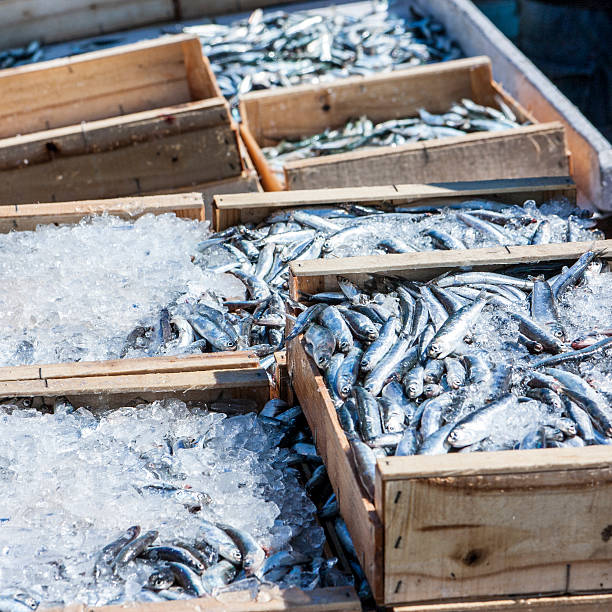The Difference Between Farm-Raised and Wild-Caught Seafood
The majority of people think of seafood as being made from recently captured wild fish that was still swimming in the ocean when it was presented to them. However, due to the increased demand for seafood, aquaculture is now a more common technique of producing seafood. So, would wild-caught versus farm-raised seafood taste different? Does the process of making delicious foods like crab cakes or a seafood boil affect the end result? In this blog post, we'll examine the distinctions between farm-raised and wild-caught seafood to assist you in making the best decision for your upcoming meal.
What is a Wild-Caught Seafood?
Seafood that has been taken directly from the wild is known as "wild-caught" seafood. This can be done using a variety of methods, such as fishing using nets, traps, and lines. To be considered wild-caught, the seafood must be captured in its natural habitats without the assistance of humans. Among the most sought-after seafood species that are caught in the wild are salmon, shrimp, tuna, and crab.
Pros of Wild-Caught Seafood
Among the many advantages of wild-caught seafood are the following:
- According to some sources, wild-caught seafood is healthier than farmed seafood. Due to the reduced doses of antibiotics and other substances to which it has been exposed, this has happened. They have a more natural diet since they seek for food in the wild, producing food that is nutrient-richer in the end.
- Wildly fished seafood frequently has a higher level of freshness than farmed seafood. This is due to the fact that food has to travel a lesser distance to get to your plate. It also retains more of its natural flavor because it hasn't been in storage for as long.
- Wild-caught seafood is a better choice than farm-raised seafood in terms of sustainability. This is so because there is minimal environmental impact and no intentional management of wild fish populations.
Cons of Wild-Caught Seafood
Wild-caught seafood offers a number of unquestionable advantages, but there are some disadvantages as well:
- The price of wild-caught seafood may be higher than that of farmed seafood. This is because there is a lesser supply and it demands more labor.
- Consistency in terms of flavor and quality of wild-caught seafood can be a little difficult. This is because a variety of factors, including the fish's diet and the environment, can impact the ultimate product's flavor.
What is Farm-Raised Seafood?
In contrast to wild-caught seafood, farm-grown seafood is any seafood that has been raised in a sterile environment, typically in fish farms or shrimp ponds. This type of aquaculture, which allows farmers more control over the food supply, is spreading as demand for seafood increases. Some of the most well-liked seafood species that are raised on farms include carp, salmon, shrimp, tilapia, and catfish.
Pros of Farm-Raised Seafood
Among the main advantages of farm-raised seafood are:
- They frequently cost less than seafood that is caught in the wild. This is as a result of the procedure being more efficient and the supply being more trustworthy.
- The consistency of flavor and quality of fish farmed in farms is usually higher. This is done so that because the environment is controlled, the outcomes are less subject to the whims of nature.
- Farmed fish is a better choice than wild-caught seafood in terms of sustainability. This is because it uses less fish and has less of an adverse effect on the environment.
Cons of Farm-Raised Seafood
Farm-raised seafood offers some advantages, but there are a few potential disadvantages as well:
- The nutritious content of farmed seafood may be lower than that of wild-caught seafood. This is because they frequently eat an artificial diet of pellets and other supplements. They also receive higher exposure to pesticides and antibiotics, which could lower their nutritional value.
- Compared to wild-caught seafood, farmed seafood may have a softer flavor. This is because they typically consume an unnatural diet and are not exposed to the real flavors of their surroundings.
- It's possible that eating seafood from farms won't be as delightful as eating seafood from the wild. This is because they typically lack flavor and aren't as fresh.
Final Thoughts
The choice between farm-raised and wild-caught seafood is ultimately yours. Both offer benefits and drawbacks, so it's important to take your preferences into account in addition to those. In general, wild-caught seafood is preferable if you want something more nutritious. If you're looking for a more economical and environmentally friendly answer, farm-raised seafood can be a better option. There is no assurance that one type of seafood will be of higher quality or flavour than another.
Consider where your seafood came from and make sure it comes from a reliable source. The quality of wild-caught or farm-raised seafood may vary greatly depending on the supplier. If your seafood is coming from a recognized supplier, you can be confident you're getting a high-quality product.
For more information on the distinctions between farm-raised and wild-caught seafood, see this blog post from Seafood Empire: https://seafoodempireco.com/farm-raised-vs-wild-caught-seafood-whats-the-difference/


